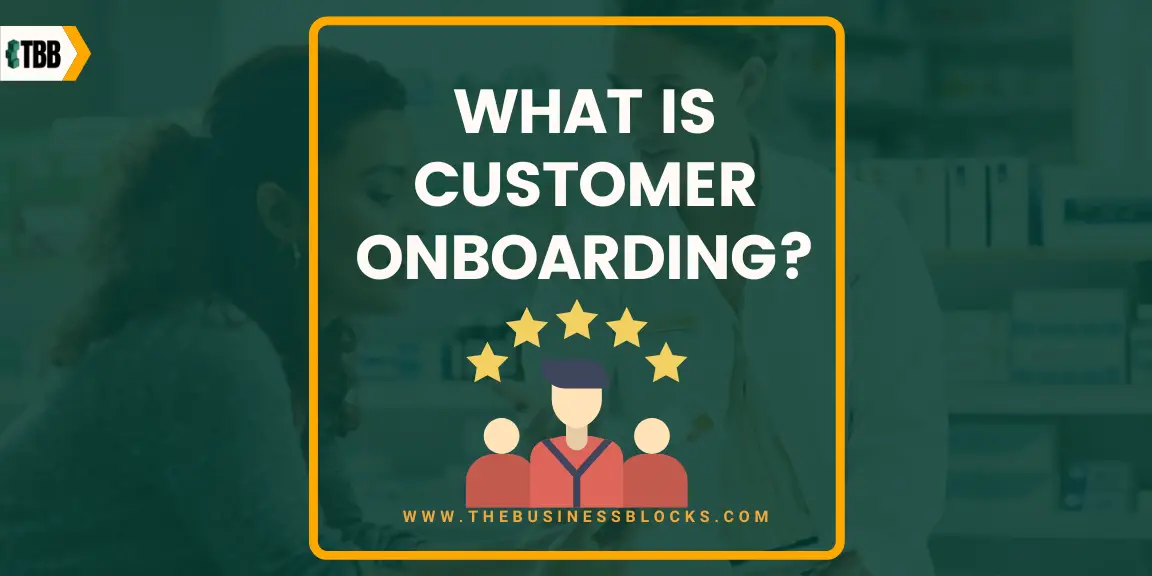Making your customer happy doesn’t stop after the sale. Customer satisfaction is measured before, during, and after the sale. You want to keep the lines of communication open to address any questions, problems, and feedback.
The goal is to make sure that you deliver on your promise and create a great impression for the business. To make this possible, most companies invest in customer onboarding methods. In some cases, customer onboarding is actually handled by a team completely different from the sales team.
What is Customer Onboarding?
In simple terms – customer onboarding is the process of introducing your company to a new customer. It involves the presentation of your products and services to the customer so they become familiar with everything you have to offer.
More importantly, customer onboarding tells a new customer how to make the most out of your company. The most straightforward way of getting this done is by extending special promotions, unique packages, offering related products, or introducing new ones.
Customer onboarding also includes listening to the client after the sale. This entails answering questions, asking for feedback, and addressing concerns the customer may have. The goal is to create a smooth process that creates an excellent impression of your business. So much so that the customer becomes comfortable and confident about the brand.
It’s a slow and ongoing process which is the best way to introduce new concepts to customers in the hope of a repeat sale. You have to look at customer onboarding as a way to build a consistent relationship with the customer to improve reputation.
Why Is Customer Onboarding Important?

Some companies fail to put some effort on customer onboarding. In fact, around 44% of companies focus heavily on customer acquisition. On the other hand, only around 18% actually focus on customer retention. Studies show that this is the wrong approach to take – and here’s why:
- Customer Onboarding is less expensive – Studies suggest that attracting new customers is at least 5 times more expensive than retaining your current ones. This massively helps minimize marketing expenses and keep profits up.
- Increased customer satisfaction – customer onboarding is concerned with keeping your customers happy well beyond the sale. Maintaining contact and allowing them to remain heard and relevant helps maintain company goodwill. They get a good impression of the brand – which means that they won’t think twice about recommending it to others.
- Increased repeat customers – of course, the excellent reputation you build with Customer Onboarding efforts can encourage return customers. Whether you’re offering a product or a service, customers who are happy with their purchase will always go back to the same supplier. After all, they already know what to expect and have a good experience with their past transaction. As you build on this positive relationship, you have to exert less effort to keep them coming back.
- Speeds up the sale process – introducing a new customer to the business takes up a chunk of resources. This involves multiple back and forth to build a sense of security for the client. With Customer Onboarding however, there’s a pre-existing confidence on the part of the client. They already have a pretty good idea about the business and it takes very little effort on your part to convince a repeat service.
- Prevents customer churn – there’s a customer churn when a client stops using your product. This can happen if the client doesn’t need the product anymore, they’ve found a better alternative, it doesn’t meet expectations, or they’re having a hard time using the item.
Customer Onboarding helps you address roadblocks through customer feedback. From here, you can make adjustments to your product or service to create a more customer-friendly merchandise.
How Long Does Customer Onboarding Take?

The process of Customer Onboarding varies, depending on several factors – including the kind of industry you happen to be in. Generally, however, the whole process can take anywhere from 60 to 90 days, depending on your time to value. This refers to the period of time that your customer recognizes the value of your product.
For example, for skin care products, it can be the amount of time before positive effects show up on the skin. For food products, it can be the length of time the client gets to eat the fare.
Customer Onboarding typically covers several steps. It starts with a kickoff meeting where you and the client go over the contract and discuss expectations and deliverables. This is the time when clients can ask questions about the product and you can make address any issues they may have.
Once the product itself is delivered, the Onboarding team follows up with a pre-built tutorial system for the client. This involves anything and everything they may need to know when setting up the product. How will they use it? How do they customize the product for specific functions? How do you troubleshoot in case of problems? All of these – including clear contact numbers – should be available in your tutorial system.
Weeks before the 90-day mark, you should be checking in with the client to find out where they are in meeting their goals. Once they do meet these goals – make sure you send them messages to recognize those goals! Mini celebrations in achieving customer milestones helps create a sense of being part of the group. This facilitates the onboarding sensation as customers recognize the fact that you’re part of the reason for their success.
What Do Customers Expect from Onboarding?
- Personalized customer portals. Customers don’t want to go through the same after-sale process. They want something unique and designed specifically for their needs. Customized portals can deliver specified content for customers – depending on the products or services they need from your business.
- Follow-up emails. While follow-up emails aren’t something they “expect” – it’s definitely something they welcome. Framed correctly, follow-up emails make your customers feel important and heard. It also leaves the door open for future communication through the introduction of new products or services. Keep in mind that follow-up emails should share helpful information and done sparingly.
- Active interaction and opportunity for feedback. Make your customers feel heard by giving them the chance to make commentaries about your product or service. You can use this information to make improvements on your service or just thank the client for patronizing your company.
- Provide plenty of avenues for support. Customer onboarding involves the process of addressing problems after the sale. Maintaining a solid connection between the client and yourself gives them the chance to quickly contact you in the event of problems. While you don’t want to expect issues, your mere availability leaves a good mark in the customer’s mind.
- Knowledge base. This refers to a collection of Frequently Asked Questions that customers can quickly visit if they encounter any problems. The FAQ page serves as the initial troubleshooting layer before clients resort to the customer service portal.
Conclusion
To wrap it up – customer onboarding is a client retention technique that’s slowly growing in popularity. You might think that the approach only works for products or services that encourage repeat customers – but that’s not the case at all. No matter what industry you practice in, investing in customer onboarding practices can help speed up sales and improve company branding.

